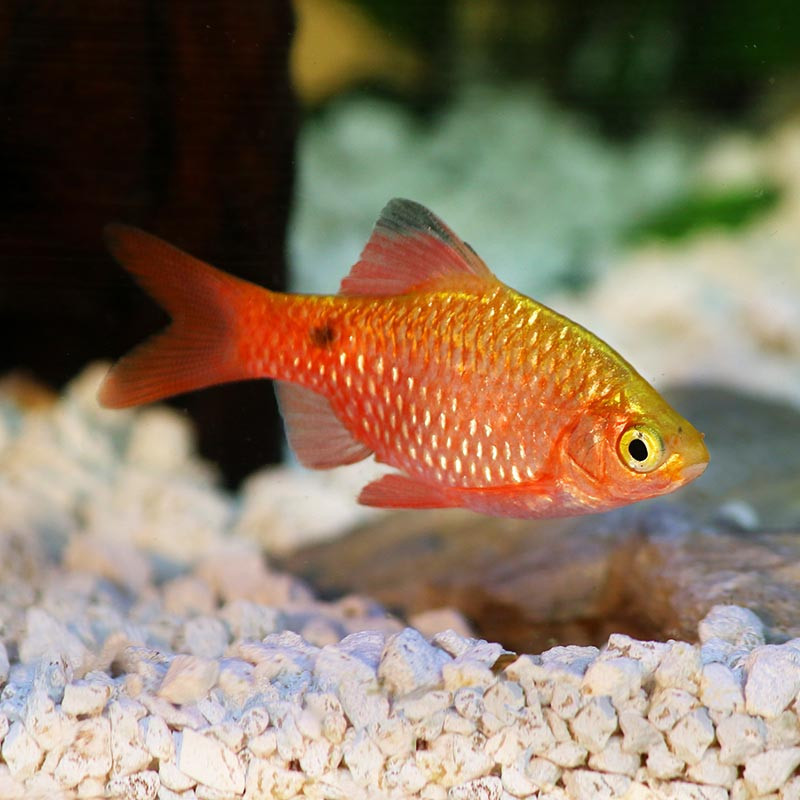Stocks Available
TIN FOIL BARB L 8 CM
SKU:123163
BARBODES SCHAWANENFELDI
3-3.5 INCH

Stock Available
Introduction: • Species: Rosy Barb • Common Names: Rosy Barb, Red Barb • Natural Habitat: Native to the freshwater rivers and streams of Southeast Asia, particularly in India and Myanmar. Physical Characteristics: • Appearance: Streamlined body with a rosy pink to reddish hue; features a darker stripe running along the lateral line and small black spots near the dorsal fin. • Size: Typically grows up to 3-4 inches (7.5-10 cm) in length. • Lifespan: Average lifespan of 5-7 years with proper care. Habitat Requirements: • Tank Size: Minimum of 20 gallons for a small group; larger tanks are preferable for schools. • Water Conditions: o Temperature: 70-78°F (21-26°C). o pH: 6.5-7.5. • Aquascaping: Provide ample swimming space along with plants, driftwood, and hiding spots to mimic their natural habitat. Diet: • Primary Diet: Omnivorous; in the wild, they feed on a variety of foods, including small insects, plant matter, and detritus. • Supplemental Feeding: High-quality flake foods, complemented with frozen or live foods such as bloodworms and brine shrimp. • Feeding Frequency: Feed small amounts 1-2 times daily to ensure adequate nutrition. Compatibility: • Temperament: Generally peaceful but can be somewhat territorial; they do best in groups. • Suitable Tank Mates: Compatible with other active, peaceful community fish of similar size. • Incompatibilities: Avoid aggressive species or those that may nip at their fins. Care Level: • Difficulty: Easy to moderate; they adapt well to different water conditions but thrive in stable environments. • Health Monitoring: Regularly check for signs of disease, particularly fin rot and ich. Breeding: • Breeding in Captivity: Possible with proper conditions; best done in a separate breeding tank. • Spawning: Egg layers; they scatter their eggs among plants, and parents typically do not provide care for the young. Economic Considerations: • Market Demand: Popular among freshwater aquarium enthusiasts for their vibrant coloration and hardy nature. • Wholesale/Retail Pricing: Generally affordable, making them accessible to hobbyists. Sustainability and Conservation: • Wild Population: Generally stable, but habitat loss and pollution can pose risks. • Aquaculture Efforts: Successfully bred in captivity, which helps reduce pressure on wild populations. • Regulations: Awareness of local regulations regarding the collection and trade of this species is essential. Conclusion: The Rosy Barb is a beautiful and active fish that adds vibrancy to community aquariums. Their peaceful nature and social behavior make them an excellent choice for beginner and experienced aquarists alike. With appropriate care and attention, Rosy Barbs can thrive and enhance any freshwater setup.
Data sheet
16 other products in the same category:
Customers who bought this product also bought: